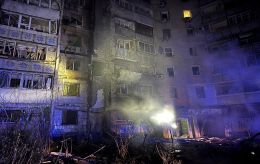50 hidden gems in Ukraine - Travel bloggers Uzol&Manko advise
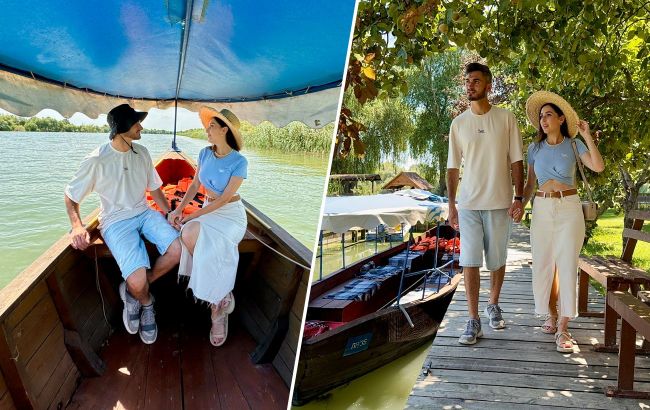 Travel bloggers Maksym Uzol and Olha Manko (collage: RBC-Ukraine)
Travel bloggers Maksym Uzol and Olha Manko (collage: RBC-Ukraine)
How much does a trip across Ukraine cost? Where to find routes without crowds of tourists? Which places in our country must be recommended to foreigners? Is it still worth starting your travel blog today? Find answers to these questions in the interview with Ukrainian travel couple Maksym Uzol and Olha Manko.
Key questions:
- When is the best time to go to the Carpathians to fully enjoy nature?
- Is it possible to find a beautiful place near Kyiv?
- How to find secret locations that few people know about?
- What should always be in a traveler's backpack?
- How to save money during trips, and what is definitely not worth saving on?
- What to do if a trip doesn't go as planned.
Maksym Uzol and Olha Manko are journalists by education and travelers by vocation, who create videos and write about little-known but interesting places in Ukraine with love for nature, culture, and the local atmosphere.
They worked on TV travel projects, including the show "Zarobitchany" on Novyi Kanal. But they gained greater recognition and popularity through their own YouTube channel "Uzol and Manko," where the couple passionately shares routes around Ukraine, revealing the unknown, picturesque corners of the country.
We spoke with the travelers about what has changed most in domestic tourism over the past few years, how to travel without stress and unnecessary expenses, which regions are best discovered through the locals, which location recharges you better than any SPA, and also about their new photo travel guide "Feel Ukraine. 50 most beautiful corners of Ukraine."
— Which place in Ukraine still impresses you, even though you've been there many times?
Olha: I have one rule: in any unclear situation, go to the Carpathians. As for me, the mountains are like a big power bank, and when I feel completely drained, it's the place that restores me, regardless of the season.
I especially love the Carpathians in autumn, when there are few people, during the off-season, and you can be alone with nature. In general, the mountains give me incredible energy: you arrive there tired, and in 15 minutes, you feel like a new person.
Locals often say, "Come to us to feel the place," meaning to fill yourself with nature, breathe the Carpathian air, eat delicious food, and talk to incredibly hospitable, kind people. That's why I go to the Carpathians to feel. My favorite place is Verkhovyna. No wonder they say it's a land where your heart skips a beat.
Maksym: The Kyiv Sea impresses me every time I go there. Twice a year, we go there with friends in different seasons. In 2020, we even celebrated New Year's there.
Our first camping trip with Olha was also there. We spent a few days together on this beautiful seaside, and rode a boat. The trip was truly romantic and very cool.
We also went windsurfing, just swam, and relaxed with friends. This place truly surprises with its gentle green shores and steep, high clay cliffs. So the Kyiv Sea is a top destination for me in any season.
— When is the best time to travel around Ukraine? Are there any "secret" periods?
Maksym: Actually, few people realize this, but Ukraine has a unique climate and expressed seasonality: autumn, winter, spring, summer. For example, many countries near the equator or in the tropics don't have that.
That's why I think the best time of year to see and enjoy nature is late April and May. That's when everything blooms, starts to turn green. First, the air is the healthiest at that time. Second, it's the "tastiest." Third, Ukraine is at its most beautiful during the blooming season.
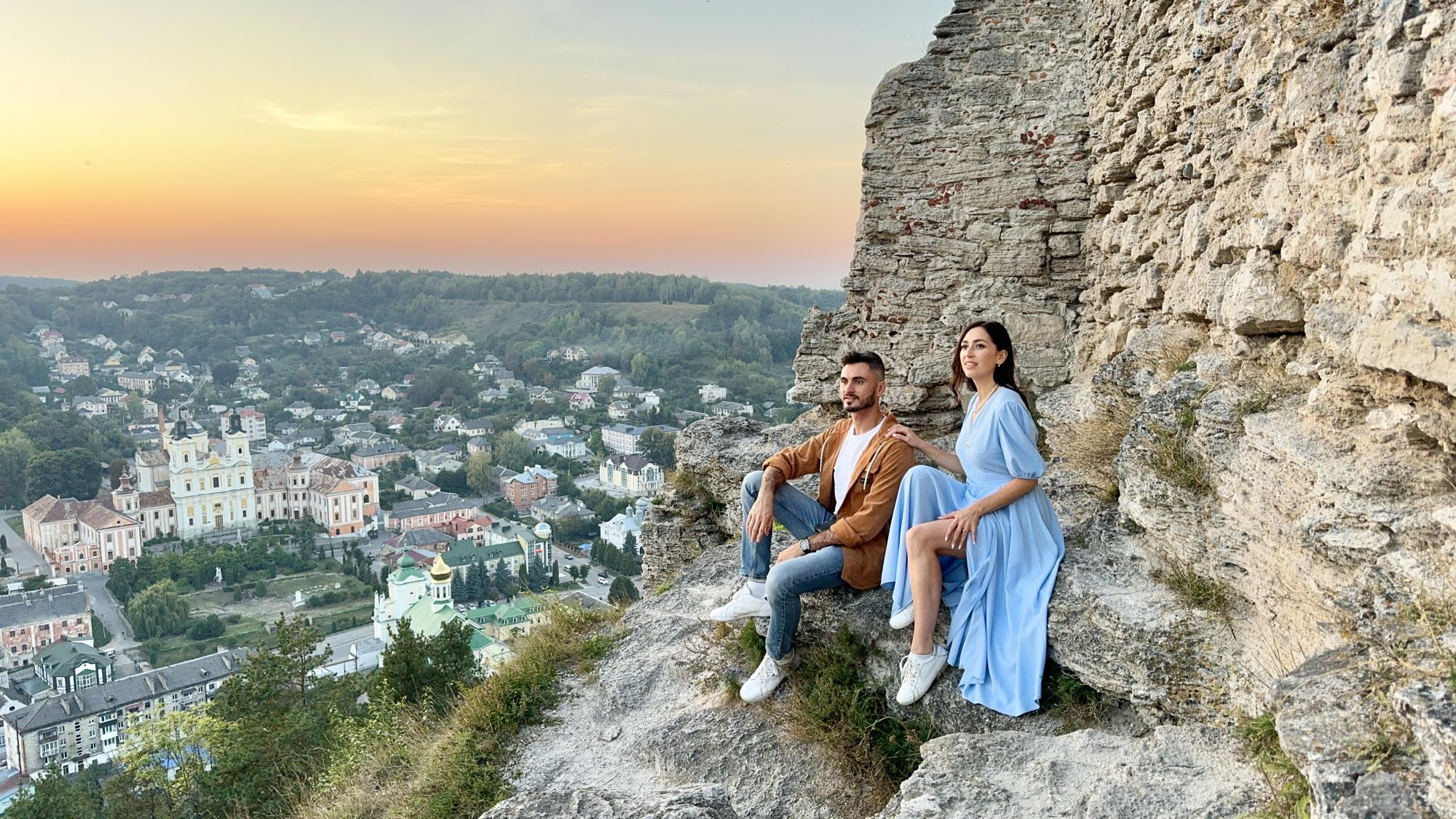 Maksym Uzol: It's worth traveling around Ukraine at any time of year because we have distinct seasons (photo: personal archive)
Maksym Uzol: It's worth traveling around Ukraine at any time of year because we have distinct seasons (photo: personal archive)
— You often show "non-classical" Ukraine. How do you find these places? Do you have your own map or a method?
Olha: Preparing for a trip is one of the most important processes because we determine what the episode will be about and what the viewers will see. It's a very meticulous process, especially if it's an underexplored region.
Recently, we were filming the Chernivtsi region, specifically Northern Bessarabia. It's underexplored, so in such cases, we turn to locals and ask them what to see. But, as practice shows, the locals often don't know what's nearby because they're busy with everyday life.
On the trip to Northern Bessarabia, people who develop tourism in the region helped us. In many towns, cities, and regions, there are tourist centers with comprehensive information about the number and location of tourist spots. They often help us.
We also now work with city and regional authorities, who often invite us to come and film their city or region to promote tourism. Of course, we still do online research, in-depth studying, and digging. So it's a combination of methods: we gather information piece by piece from every available source.
— How much does your average trip for two in Ukraine cost? Where do you try to save money?
Maksym: My answer won't be useful for everyone because we run a travel blog. If someone simply goes on vacation, their expenses will be different. Of course, most expenses go to accommodation, food, and transportation.
There's no average amount because you can film an episode for $240 or $2,400. It depends on the locations we've selected and the places we've found.
For example, if we're filming Chernivtsi, you can walk around the center and film that episode yourself. But if it's the Odesa region, you might need to travel an hour to each location. So there's no single fixed number.
It's hard to save money when filming places, especially those with little to no information or access to information. A lot is filmed on the go. We used to plan budgets, but now everything's very spontaneous.
— What do you always take with you on a trip, even a short one?
Olha: Half of what we take on trips is filming equipment, the other half is my cosmetics and dresses (laughs).
We never go on a trip without a first-aid kit because every journey is stressful for the body, and there's always a risk you might catch a sore throat or get food poisoning.
In the Ternopil region, we drank water from a spring praised by locals as healing and ended up in bed for three days. We felt so bad, and the first-aid kit helped us get back on our feet.
As long as we go on shoots, we bring tripods, microphones, and power banks, meaning a full set of equipment. We also bring bars, grains, and dried fruit. We often end up in places with no cafés, but we need a snack. Those bars have saved us more than once.
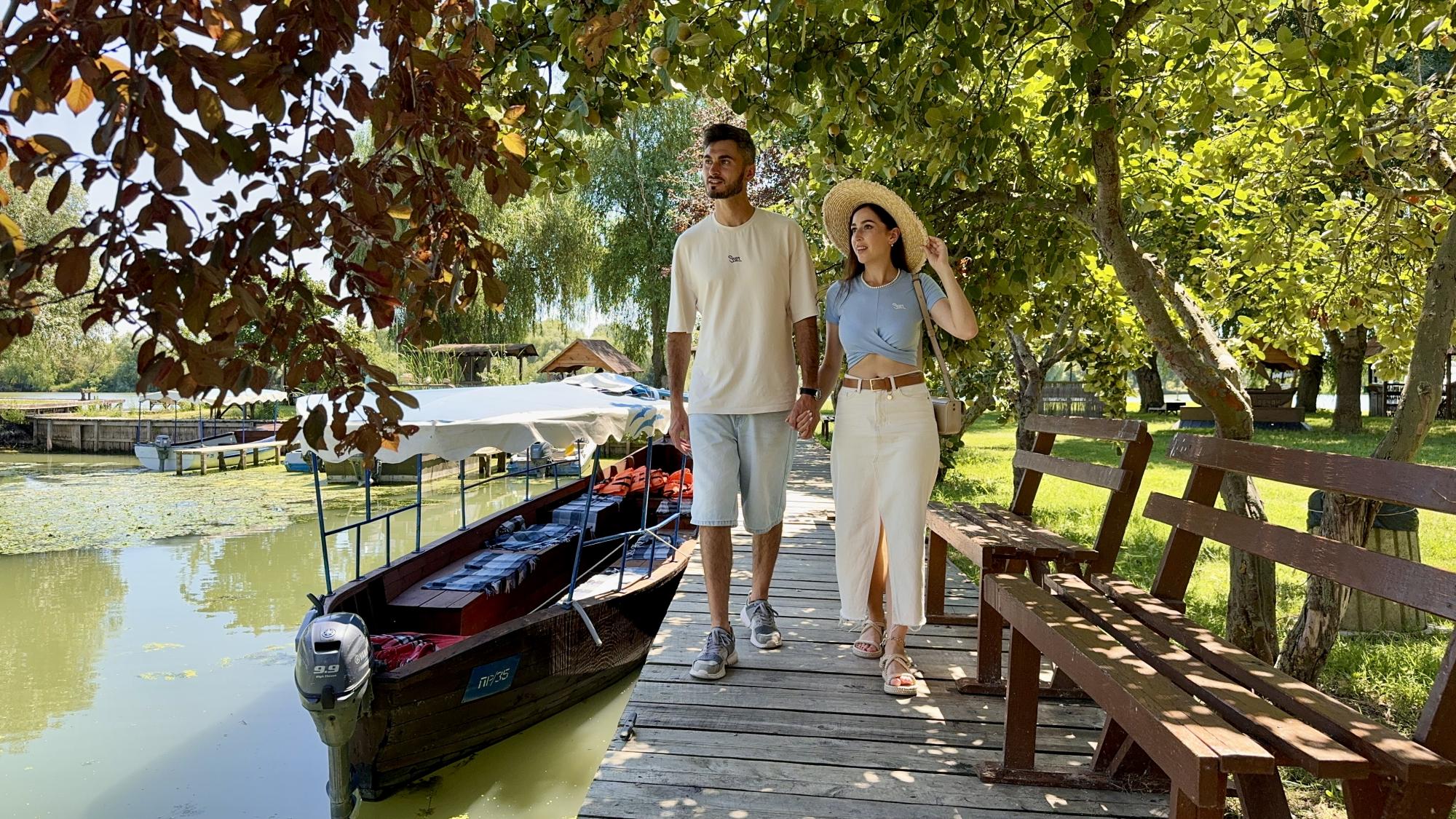 It's worth having a snack with you in case there's nowhere to eat (photo: personal archive)
It's worth having a snack with you in case there's nowhere to eat (photo: personal archive)
— Let's imagine friends from abroad come for a week. What three places in Ukraine would you show them first and why?
Maksym: Foreigners are amazed by Odesa, love Lviv, and enjoy Kyiv.
As for Odesa, I would show them the Kuyalnyk Estuary, which turns pink in summer, so they'd say: "Wow, you have such cool lakes!" From Lviv, I'd go to the Carpathians and take my foreign friend to a cheese dairy on a mountain pasture so they could see how real cheese is made, where real Hutsuls live and make "budz" and "vurda."
I'd walk the streets of Kyiv near the Golden Gate and take them to the Peizazhna Alley to let them feel the spirit of free Kyiv.
— What story from your shoots do you remember the most? Something funny, awkward, sad, nice—anything.
Olha: Honestly, we have mishaps on every shoot. On the most recent shoot in the Carpathians, we lost our microphone in tall grass on a mountain. The hard part was that it was our only mic, and we still had one and a half episodes to film.
We looked for it for a long time, asked a whole group of tourists to help, shouted our names into the grass, and split into sectors to search. After about half an hour, we finally found it.
In North Macedonia in 2021, security forces detained us because they thought we were filming a courthouse and might be provocateurs or spies. They questioned us for about two hours, but it ended well.
Another time, we went across a field to find a river with a cliff, but we didn't find it. On the way back, we blew out two tires. We had only one spare, and we were stuck in the middle of a field.
Luckily, we were in Zakarpattia, where our good friend lives, and he rushed over from Uzhhorod and brought us tires. Every shoot is an adventure. The most important thing is that it ends well!
— What has changed the most in domestic tourism over the last 5 years, for better and worse?
Maksym: When the lockdown started five years ago, everyone thought it was the end of the world and that there was no way to travel. But that situation greatly pushed the development of Ukrainian national tourism. That's exactly when we appeared, starting to explore and tell people about interesting travel destinations, and soon, crowds began going there.
I remember that last year we filmed a lavender field in Ternivka village, and just a week later, the owner called me jokingly, saying we had caused such traffic jams there that it became impossible to drive through.
Over these five years, despite the war, tourism in western Ukraine has reached quite a high level. There are now costumed guides, theatrical, or interactive tours. Top hotels with extremely high-quality service, no equal in other countries, have appeared. We've finally realized that tourism is the engine that makes a place prosperous.
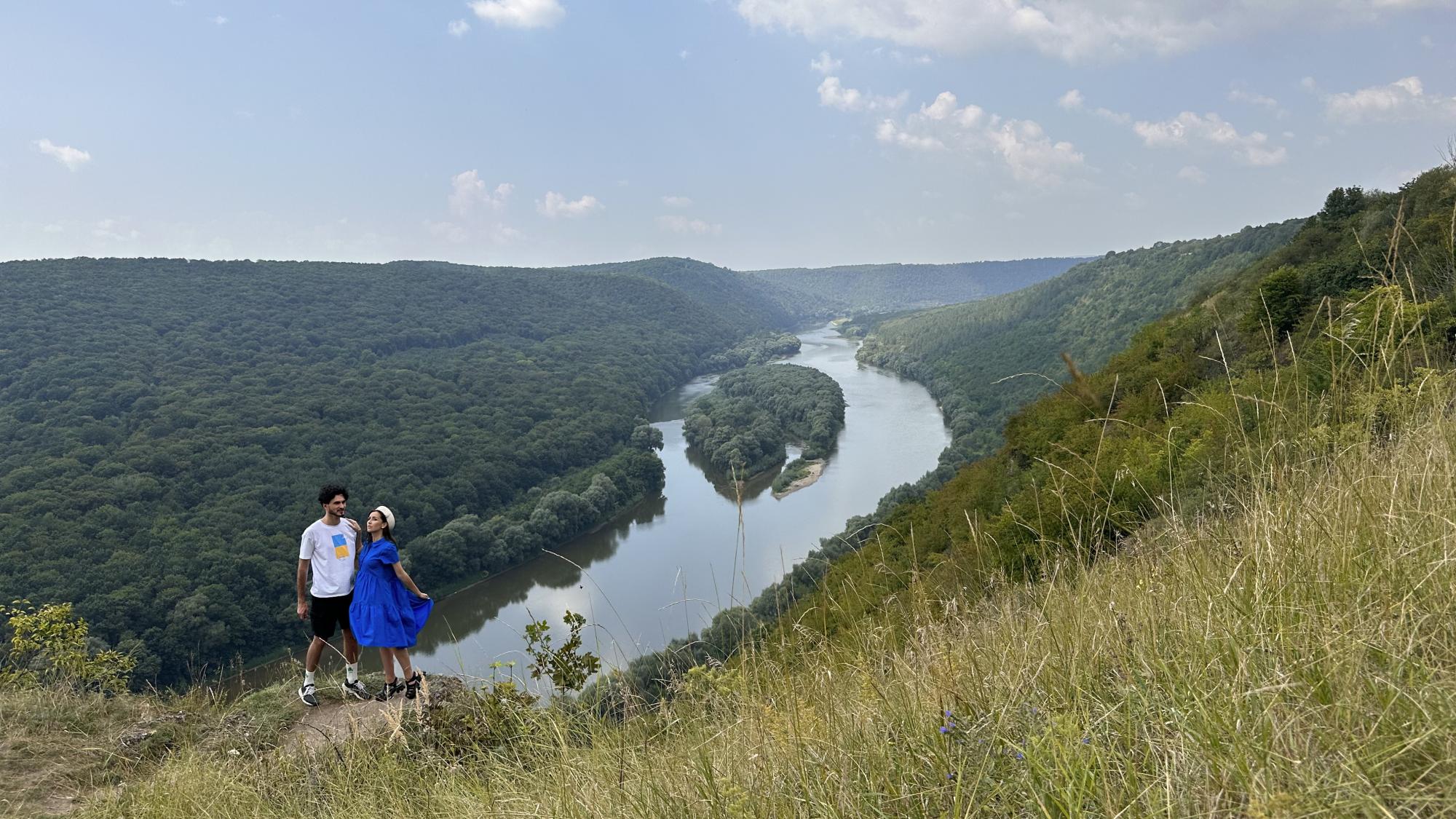 Maksym Uzol: Over these five years, even despite the war, tourism in western Ukraine has reached quite a high level (photo: personal archive)
Maksym Uzol: Over these five years, even despite the war, tourism in western Ukraine has reached quite a high level (photo: personal archive)
— In November of last year, Maks, you received a draft notice and posted a photo from the military medical commission. How did the situation end?
Maksym: The situation was actually rather routine and uneventful. Last year, in the fall, I received a draft notice, went to the recruitment office, where they updated my information and issued another summons for the military medical commission. I spent a couple of days going from doctor to doctor. I was sent for further examinations several times based on the commission's results. So the process got drawn out.
At this point, I've completed all the medical and documentation procedures, so I'm waiting for the commission's decision. As it turns out, it's quite a lengthy process. I have certain health-related issues, but I've never spoken about them publicly and still don't want to, since it's a deeply personal and traumatic topic.
— Nowadays, many travel blogs are developing in Ukraine. Do you think the niche is still open for newcomers? If so, how should one start?
Olha: Five years ago, we were the only Ukrainian-speaking travel couple on YouTube. Back then, people convinced us to blog in Russian to get more reach and advertisement. But we firmly decided to create content in Ukrainian, to show that there can be high-quality videos on Ukrainian YouTube, too, and set a standard.
At that time, it was difficult for us to grow because most users searched for content in Russian. Now we see much Ukrainian-language content appearing, and that's a huge plus! We're so happy to see more Ukrainian-speaking travel blogs.
But I get upset when followers message us saying, "Uzol and Manko, there are clones of your YouTube channel now!" They send us travel projects where couples copy our format, dress like us, and use our catchphrases. So, we have to create something new permanently to stand out among the clones.
So, my advice for those who want to start their channel: first, you need to be unique, have something that makes you different from others. When you run your channel, stay true to yourself instead of trying to imitate someone else, because that's what's most valued on YouTube. Doing what you love and loving what you do brings the best results.
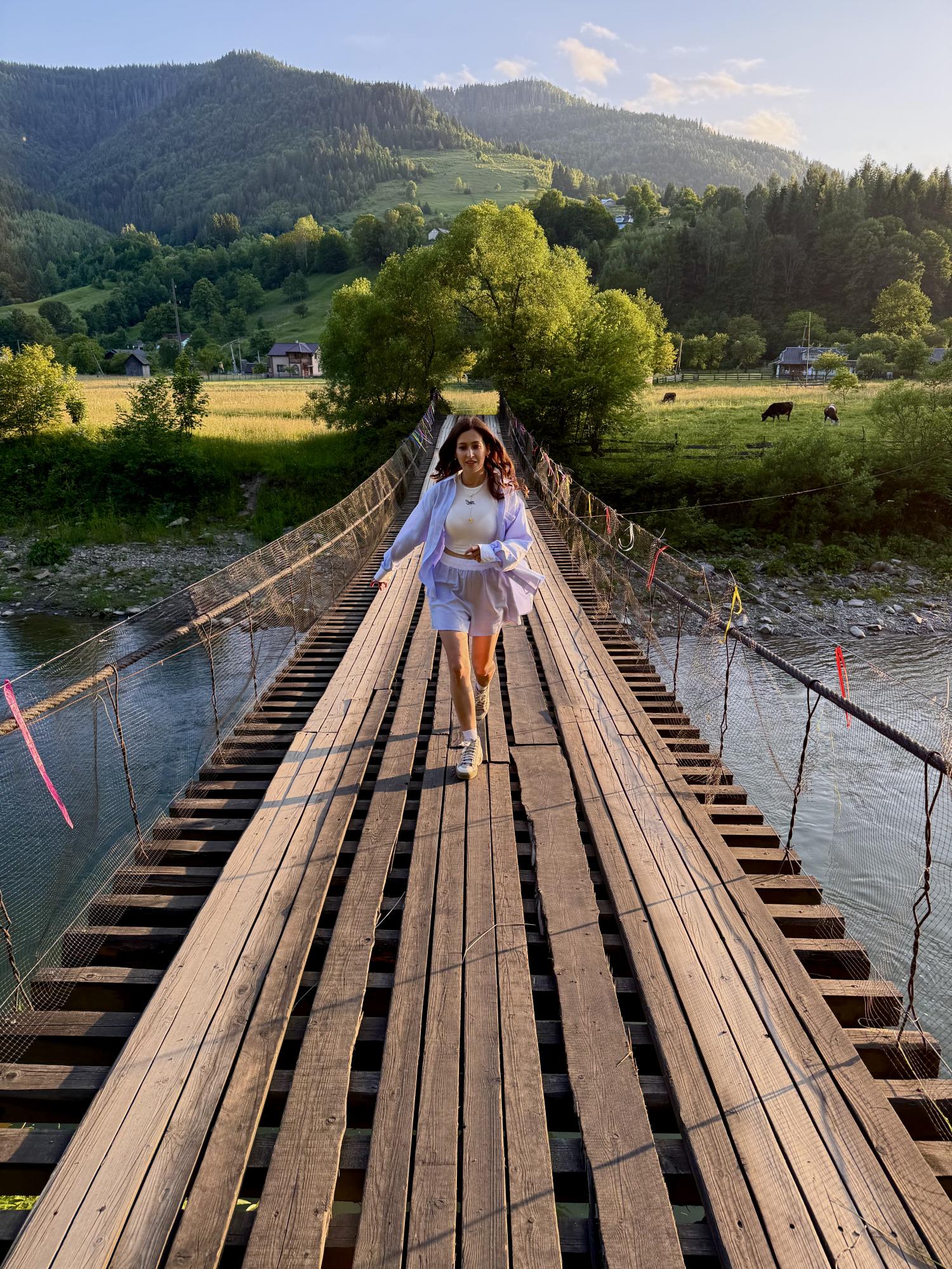 If you want to start your travel blog, find what makes you different from everyone else (photo: personal archive)
If you want to start your travel blog, find what makes you different from everyone else (photo: personal archive)
— You've published a book. What is it: a guide, road stories, something else?
Olha: The idea of creating a book about the most beautiful corners of Ukraine came a few years ago, but we never had the time for it. We decided that our little anniversary, five years of our YouTube channel, would greatly motivate us to bring this dream to life.
This book is a photo travel guide to Ukraine. We collected places we consider the 50 most beautiful corners of Ukraine that impressed us the most over the past five years. We wanted people to flip through the pages and feel how diverse and rich our Ukraine is, and how many truly incredible places there are.
For us, it's a very personal project. We were nervous about it because it’s a whole new field. We did everything ourselves and published the book without asking any publishers. The only help we had was from a designer who did the layout. But we wrote it, selected the photos, and created the concept ourselves. It was a new and interesting experience, which, of course, brought challenges, but that's part of the process.
It's such a thrill to hold your book in your hands! The feeling is completely different from posting a video on YouTube because you can't hold a video in your hands.
We put a photo of the pink Henichesk Lake in the Kherson region on the cover. We filmed it back in 2020, at the start of our YouTube journey, and now it's a temporarily occupied territory. So for us, the book cover is a reminder about the places under occupation.
We know that we have many followers from the Kherson region and Crimea. For them, we are a connection to Ukraine. So our book cover is a message to people under occupation: "We're with you, we remember you, we are one country."
— How is the book different from your videos? What will people find in it if they've already seen all your episodes?
Olha: This book is essentially a continuation of our videos. There are QR codes that link to the videos about those places next to the locations featured in the book. So, if someone is interested in a specific place, they can scan the code and watch the video.
For me, the book and YouTube are not separate projects. They are a part of one big "Uzol and Manko" project. We've just gone beyond our YouTube channel and created a book. We plan to translate it into English to present it to an international audience.
The book is filled with beautiful, vibrant photos of Ukraine, showing it in a way you definitely won't see in foreign media. So we really hope we'll be able to publish it in English.
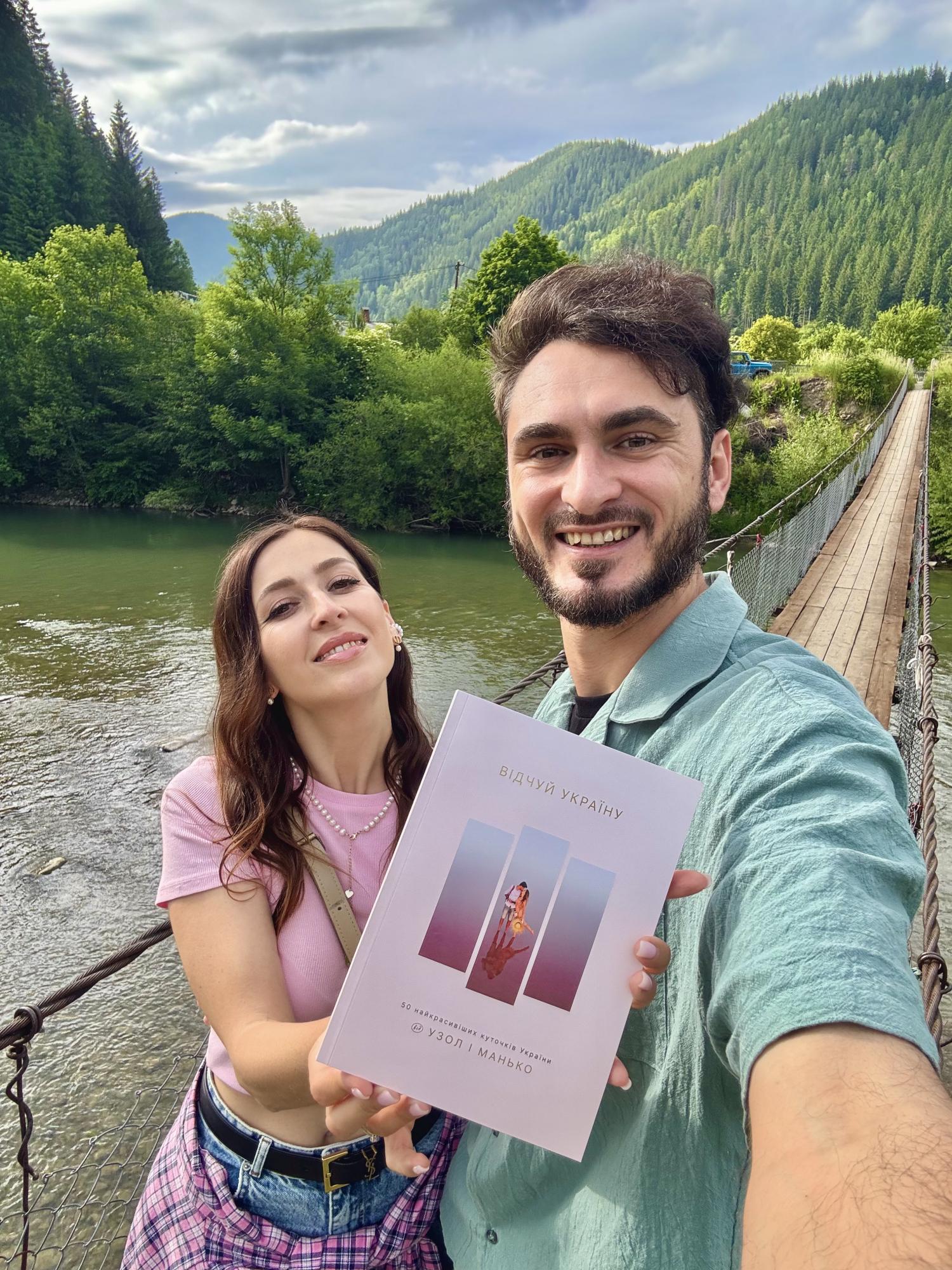 Uzol and Manko have released their travel book (photo: personal archive)
Uzol and Manko have released their travel book (photo: personal archive)
— What do you dream of as travelers? Is there a spot in Ukraine you haven't reached yet but really want to?
Olha: We're very spontaneous. If we want to film something, we just go and do it. Since it's just the two of us filming, all decisions are made quickly. Recently, when we saw many beaches in Odesa reopening this season, we packed up in two days and went to shoot.
Of course, we keep discovering new places and directions in Ukraine where we want to go and film. Unfortunately, not all are currently accessible.
For instance, in spring 2022, we planned to film in Kharkiv. We had already drafted the plan and listed the places to visit, but the full-scale invasion began, and we couldn't do it. And we still haven't, because we only shoot in relatively safe areas.
Maksym: We really hope to film episodes in Kharkiv as soon as the security situation improves. A lot connects us with Kharkiv, and Olha and I have been there many times. Actually, I planned to study in Kharkiv and used to go there often with friends. It is a beautiful city and probably one of the most patriotic ones in Ukraine.
Olha: Another dream is to film a travel blog in Antarctica. We hope we'll be able to make that happen one day.

